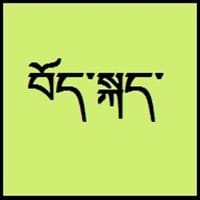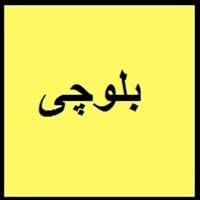Countries
China, Nepal
Afganistan, Iran, Oman, Pakistan
National Language
Nepal, Tibet
Iran
Second Language
Not spoken in any of the countries
Not spoken in any of the countries
Speaking Continents
Asia
Asia
Minority Language
China, India, Nepal
India, Tajikistan, Turkmenistan, United Arab Emirates
Regulated By
Committee for the Standardisation of the Tibetan Language
Balochi Academy, National Languages Committee
Interesting Facts
- Tibetan dialects vary alot, so it's difficult for tibetans to understand each other if they are not from same area.
- Tibetan is tonal with six tones in all: short low, long low, high falling, low falling, short high, long high.
- Balochi language had no written form before the early 19th century. The official language used until that time was Persian.
- Balochi has borrowed words from Persian, Arabic, Sindhi, and other languages.
Similar To
Not Available
Kurdish and Persian
Derived From
Not Available
Ancient Indo-Iranian Language
Alphabets in
Tibetan-Alphabets.jpg#200
Balochi-Alphabets.jpg#200
Scripts
Tibetan alphabet, Tibetan Braille
Perso-Arabic script
Writing Direction
Left-To-Right, Horizontal
Not Available
Hello
བཀྲ་ཤིས་བདེ་ལེགས། (tashi delek)
Salam
Thank You
ཐུགས་རྗེ་ཆེ་། (tujay-chay)
mana bebahgsh
How Are You?
ཁྱེད་རང་སྐུ་གཇུགས་བདེ་པོ་ཡིན་པས།
(kayrang kusu debo yimbay?)
chone tao?
Good Night
གཟིམ་ལཇག་གནང་དགོས་། (sim-jah nahng-go)
jawáin shap
Good Evening
དགོང་དྲོ་བདེ་ལེགས།
jawáin begáh
Good Afternoon
ཉིན་གུང་བདེ་ལེགས།
Not Available
Good Morning
སྔ་དྲོ་བདེ་ལེགས། (nga-to delek)
jawáin sawáh
Please
thu-je zig / ku-chee.
Mihrabani kan
Sorry
ཀོང་དགས་། (gawn-da)
bebaksh / bebagsh
Bye
ག་ལེར་ཕེབས་། (kha-leh phe)
bye
I Love You
ང་ཁྱེད་རང་ལ་དགའ་པོ་ཡོད་ (nga kayrâng-la gawpo yö)
Tu mana doost biyeh
Excuse Me
དགོངས་དག བཟོད་དུ་གསོལ། ཐུགས་རྗེ་གཟིགས།
mana bebahgsh
Dialect 1
Central Tibetan
Eastern Balochi
Where They Speak
China, India, Nepal
Pakistan
Dialect 2
Khams Tibetan
Western Balochi
Where They Speak
Bhutan, China
Afganistan, Iran, Tajikistan, Turkmenistan
Dialect 3
Amdo Tibetan
Southern Balochi
Where They Speak
China
Iran, Oman, Pakistan, United Arab Emirates
Speaking Population
Not Available
Native Name
བོད་སྐད་ (pö-gay)
بلوچی
Alternative Names
Bhotia, Dbus, Dbusgtsang, Phoke, Tibetan, U, Wei, Weizang, Zang
Baluchi
French Name
tibétain
baloutchi
German Name
Tibetisch
Belutschisch
Pronunciation
Not Available
Not available
Ethnicity
tibetan people
Predominantly Baloch, some Brahui
Origin
c. 650
19th Century
Language Family
Sino-Tibetan Family
Indo-European Family
Subgroup
Tibeto-Burman
Not Available
Branch
Not Available
Not Available
Early Forms
Old Tibetan, Classical Tibetan
No early forms
Standard Forms
Standard Tibetan
Balochi
Signed Forms
Tibetan Sign Language
Not Available
Scope
Not Available
Individual
ISO 639 1
bo
No data available
ISO 639 6
Not Available
Not Available
Glottocode
tibe1272
balo1260
Linguasphere
No data Available
58-AAB-a
Language Type
Not Available
Living
Language Linguistic Typology
Not Available
Not Available
Language Morphological Typology
Not Available
Not Available
All Tibetan and Balochi Dialects
Most languages have dialects where each dialect differ from other dialect with respect to grammar and vocabulary. Here you will get to know all Tibetan and Balochi dialects. Various dialects of Tibetan and Balochi language differ in their pronunciations and words. Dialects of Tibetan are spoken in different Tibetan Speaking Countries whereas Balochi Dialects are spoken in different Balochi speaking countries. Also the number of people speaking Tibetan vs Balochi Dialects varies from few thousands to many millions. Some of the Tibetan dialects include: Central Tibetan, Khams Tibetan. Balochi dialects include: Eastern Balochi , Western Balochi. Also learn about dialects in South American Languages and North American Languages.
Tibetan and Balochi Speaking population
Tibetan and Balochi speaking population is one of the factors based on which Tibetan and Balochi languages can be compared. The total count of Tibetan and Balochi Speaking population in percentage is also given. The percentage of people speaking Tibetan language is Not Available whereas the percentage of people speaking Balochi language is 0.11 %. When we compare the speaking population of any two languages we get to know which of two languages is more popular. Find more details about how many people speak Tibetan and Balochi on Tibetan vs Balochi where you will get native speakers, speaking population in percentage and native names.
Tibetan and Balochi Language Codes
Tibetan and Balochi language codes are used in those applications where using language names are tedious. Tibetan and Balochi Language Codes include all the international language codes, glottocodes and linguasphere.





